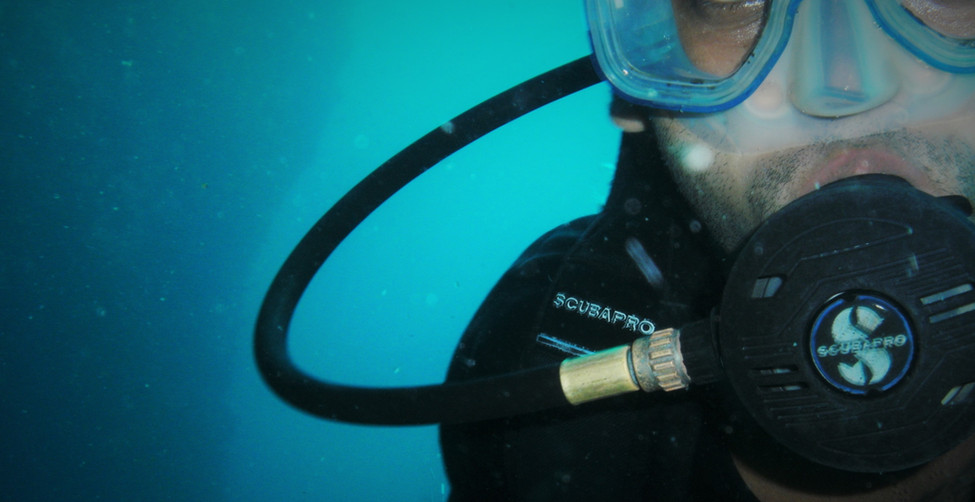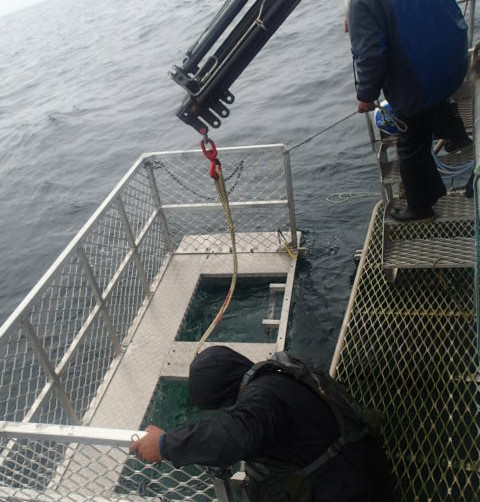Transdisciplinary Human- Shark researcher
Professor SNU
PhD. Anth (2021) & PhD. Psyc (2013)
International officer & India-lead- Marine Social Sciences Network
Human animal conflict advisor- Sundarban tiger widow welfare association.
Faculty Coordinator for ICUN Forests 2023 International Course Program.
All content ©️ Raj Sekhar Aich
+91 90518 75180

Iridescent skin
Raj Sekhar Aich
Sponsored and supported by Soosie Lucas
A Multispecies journey of the Great White Shark and caged humans.
A multimodal project.
1,600 km from Antarctica, an aluminium cage is dropped into the ocean. Suited divers climb inside and bear the frigid waters in wait of an animal which travels the lines between myth and reality. This wait can be for a minute, and for some what can seem a lifetime. For this experience, they have flown from all over the world, then travelled to the end of New Zealand and got on a boat across the turbulent Foveaux Strait. But if they’re lucky, they come face to face with an entity who can trace its lineage for at least 400 million years, an apex predator of its environment—the Great White Shark. Who are these people that come thousands of kilometers to spend a few minutes in the water with these alleged ‘monsters’? Why are they here? Do they finally find the ‘monster’? Or does something else entirely stare back at them through the bars of the cold cage? In this book, an Indian marine anthropologist anthropologist recalls his fieldwork with his British soul friend, as they undertook the journey at the intersection of two sentient species, humans and the White Sharks.
Forward by Agustín Fuentes
Professor of Anthropology, Department of Anthropology, Princeton, New Jersey
“When human beings jump in the marine environment, they know they are not at the top of the food chain. This knowledge, along with the darkness and murkiness of the environment, create the scope for conjuring up monsters who are waiting to pounce on us just beyond the realm of our vision.”
White Sharks are not monsters, nor are humans, but both offer much to fear, and admire. Two very different beings who overlap rarely and when they do it often is in a form of a conflictual, mutually preferentially avoided context. However, there is one space wherein humans and these great fish do come face-to-face in a different setting. It is in the Shark’s home space, mediated through a very particular human-controlled environment: cage diving. The opening quote frames this experience in a manner I am sure every reader can identify with, even if only in one’s imagination. But in the pages of this book, we come close to sensing that the Sharks might also be suspecting something similar about the whole endeavor. This context alone, as revealed via the sections of text focused on before, during and after the cage diving encounters and activities, makes Iridescent Skin worth reading. But the cage diving interface is actually only a small part of the adventure....
Dr. Raj Sekhar Aich, a marine social scientist and interdisciplinary multispecies researcher, invites the reader along for extended fieldwork at the intersection of two sentient species, Humans and White Sharks. This frame lets us know we are in for a voyage. And what an expedition it is. The book you hold in your hands (or the e-version of it on the device in your hands), is an enticement into the experiential journey of a scholar/artist/narrator who starts out with the goal of appreciating/assessing a multispecies entanglement but ends up traversing a tangle of personal, social, historical, ecological and perceptual water/land/species-scapes. On the surface this is a narrative about a brief slice of time, place, and context with a focus on one town, one ship, one cage diving enterprise, and two species. But in the end, this is not simply a tale of sharks and people, of cage-diving or human-other being conflict. Nor is it just another academic analytic. This is an expedition weaving (auto)ethnographic and multispecies chronicles with imaginative place-making and narrative journeying. Prepare for a deep dive into various modes of perception, sensation, and analyses, invoking a deep entanglement of the entire sensorium. This is an immersive multispecies anthropology. You are about to take the plunge yourself, so I’ll not keep you too long, but here are a few key thoughts offering a little signposting and wayfinding.
The shark diving narrative forms the most traditional core of the text. An anthropological frame facilitates introduction to and experience in the town of Bluff, its history and the peoples in it. This frame carries through on the water and off of it. The cage-diving enterprise is situated in a particular history, context, economy and politic. The setting, the background, and the quotidian vignettes are welcome elements enabling the text to be as effective as it is. Core to the ethnographic moment are the descriptions of the cage-diving enterprise, the boat, the characters who people the boat and, centrally, the White sharks who swim up and ‘interact’ with Raj, the boat and the various humans involved. Here the narrative works on multiple fronts enabling us to envision and feel the experience. There is excitement in meeting the sharks, even if all too briefly, revealing for a moment what being a few meters away (or closer!) to a massive creature like the white shark is like. Each shark is a stranger but each is also an individual, like the people on board the boat and in the town. We know so little about the sharks yet we get to share space with them and in doing so push against a certain aspects of human hubris. Here is where the amazing imagery comes in to play. The photos of the sharks, even when we only get glimpses of parts of their bodies, are powerful. There is always the sense of movement, immersion in a foreign life-medium (ocean), and the sense that maybe this interface is not such a good idea all around. But it is a truly fascinating reality, spend time with it.
Surrounding the ethnographic narrative and analyses, and molded to it in often surprising fashion, are the artistic, personal, reflective, often vulnerable, thoughts and experiences of Raj as he undertakes the journey of PhD research; friendships, isolation, comraderies, loneliness, and all the other chaos and confusion of a deeply moving and often non-linear life experience that he found in Bluff. Histories of childhood in India, artistic imaginings and personal revelations, move and spread across the pages offering one a sense of the experience, the mental landscapes and the emotional processes this research experience fostered. These are not the typical contents of the products of doctoral theses, and yet they act to make the intellectual contribution more real, more visceral and more convincing. Let them wash over you as you read and don’t worry about the details or force specific logics in the connections, follow Raj’s lead.
On many levels this book feels like a multi-modal sensorium even though it literally consists only of text and images. There is an accompanying documentary that I recommend if you can access it, that only adds to this sensation. The power in this book rests in the respect Raj has for the sharks, people and places he spends time with. There emerges a depth well beyond the descriptive and beyond the analytic in the reflections and unfolding narrative. The honesty of conflict, confusion and challenge, of grace and humanity/animality, and of care enliven the overall impression one obtains thinking with Raj, the sharks, the sea, Bluff, and beyond.
Enjoy.
Agustín Fuentes
Soosie Lucas
Anthropologist & artist
Ms Soosie Lucas is a profoundly talented artist and anthropologist, and also the sponsor of this expedition, and my research assistant, quite simply this project wont exist in any form without her. She supported with boarding and food during my work and helped copy check the thesis. She was right next to me, with months of digging through archival materials in libraries and museums, and even during interviews. Furthermore, many times, during my field work, she came out on the daily cage diving trips, and regularly bring me food and other essential commodities. When the situation arose to pitch the idea of my participant observation among the cage divers, Soosan contacted Mike (The owner and operator of Shark Experience NZ, the last surviving cage diving operation in NZ), drove us to Bluff again from Christchurch, and after a lot of discussion, was finally able to convince Mike and Carwyn (his partner), to allow me to be on their boat as a participant observer and a boat hand. More than anything else, it is an honor to call this brave and brilliant woman my closest friend on planet earth.

Acknowledgement
The book and the thesis it was based on would have been non-existent without Mike Haines and the team of Shark Experience Bluff, New Zealand. They believed in me and helped me to accomplish the work I have done for months on their facilities. I want to then express my deepest thanks to my current primary supervisor Michael Grimshaw, who came in at a crucial time of the thesis and literally salvaged it from sure failure. I have to thank Lyndon Fraser, who was a constant support, and positive energy in my life and the project. With that I thank the University of Canterbury, and the Department of Sociology and Anthropology and all its faculty, who were always allowing me to go the way I wanted to in fully exploring this thesis. I also want to thank Dr. Piers Locke of the Anthropology programme who introduced me to multispecies ethnography and guided me a long path of the way. I thank Associate Professor Steve Crawford at the Department of Integrative Biology at the University of Guelph in Guelph, Ontario, Canada.
I want to thank the UC Alumni Association for a special fund I was awarded, again without whom I literally would not have been able to finish this thesis, and I vow to pay it forward, and help and guide future scholars of the university. I have to thank Professor Jon Harding, who has always been extremely kind to me, yet again who’s help was pivotal in the final completion of this project. And to say thanks to Soosan, my research assistant and one of my closest friends in the world for her help in this project is a gross understatement, because none of this would have existed without her.
Iridescent Skin
The documentary
(Please use headphones or good speakers while watching)
A sensory documentary exploring Humans and White sharks encountering each other through cage diving in Foveaux Strait, seen and felt through the eyes of the researcher among them.
Sponsor, Art director, Logistics support, research Assistant- Soosie Lucas
Primary editor- Sandip Chowdhury
Director, producer, music, editor, camera- Raj Sekhar Aich
(Please use headphones or good speakers while watching)
A chapter reading
(Audio recital)
An intimate reading of ethnopoetrical section in my upcoming book- IRIDESCENT SKIN. The first meeting with a female white shark, awaiting my beloved across oceans and millennia.(PLEASE USE HEADPHONES OR GOOD SPEAKERS WHILE WATCHING)

Drawings inspired by the cage diving experience


























